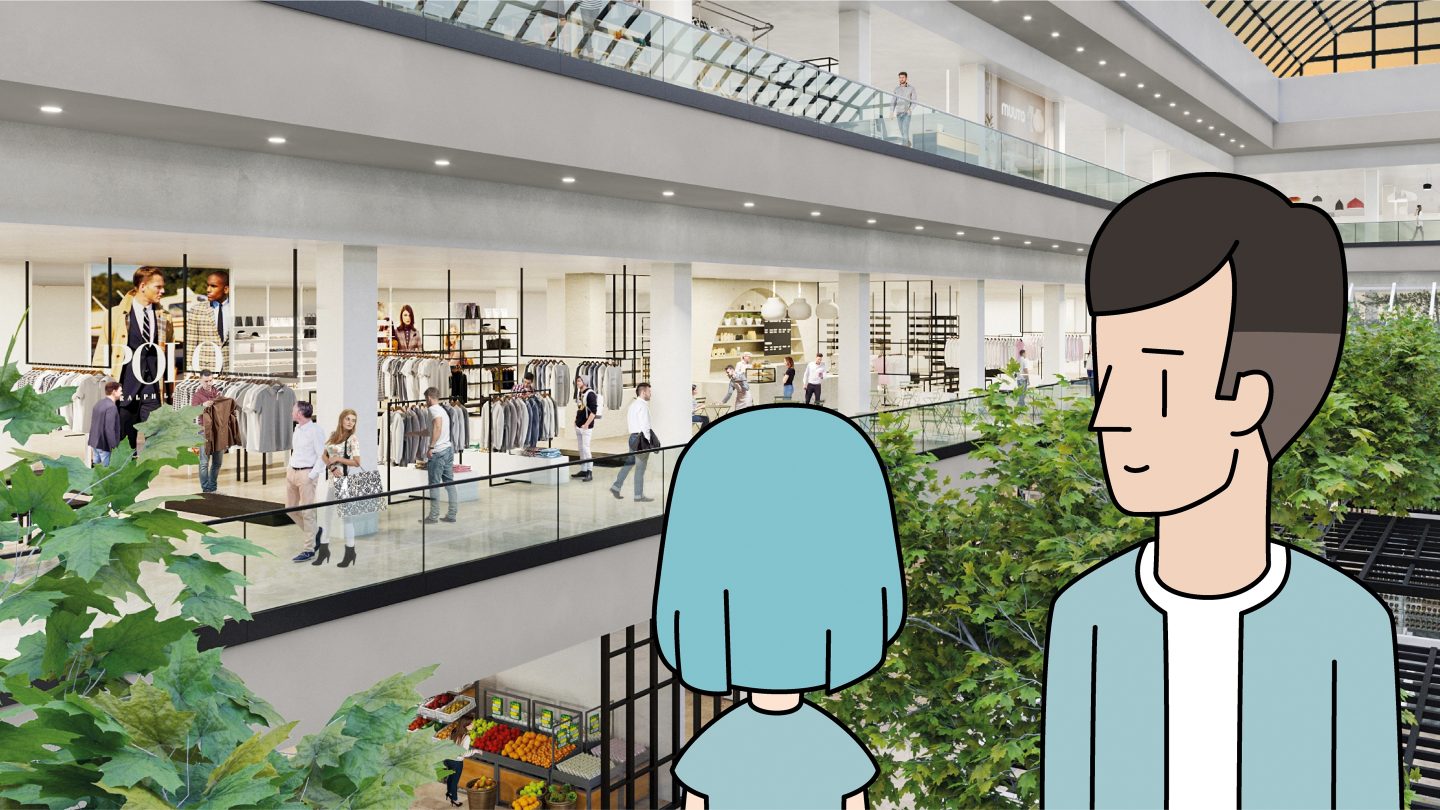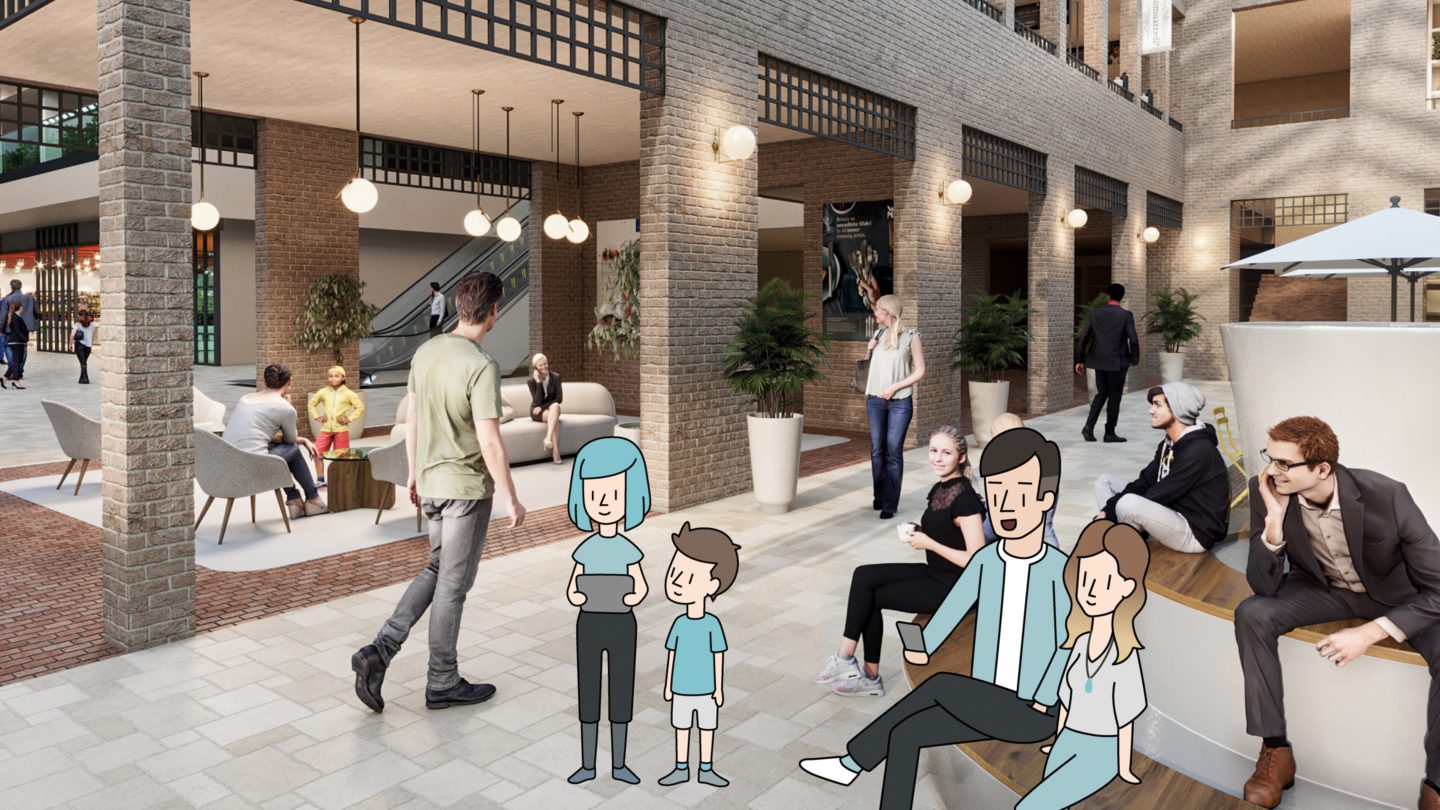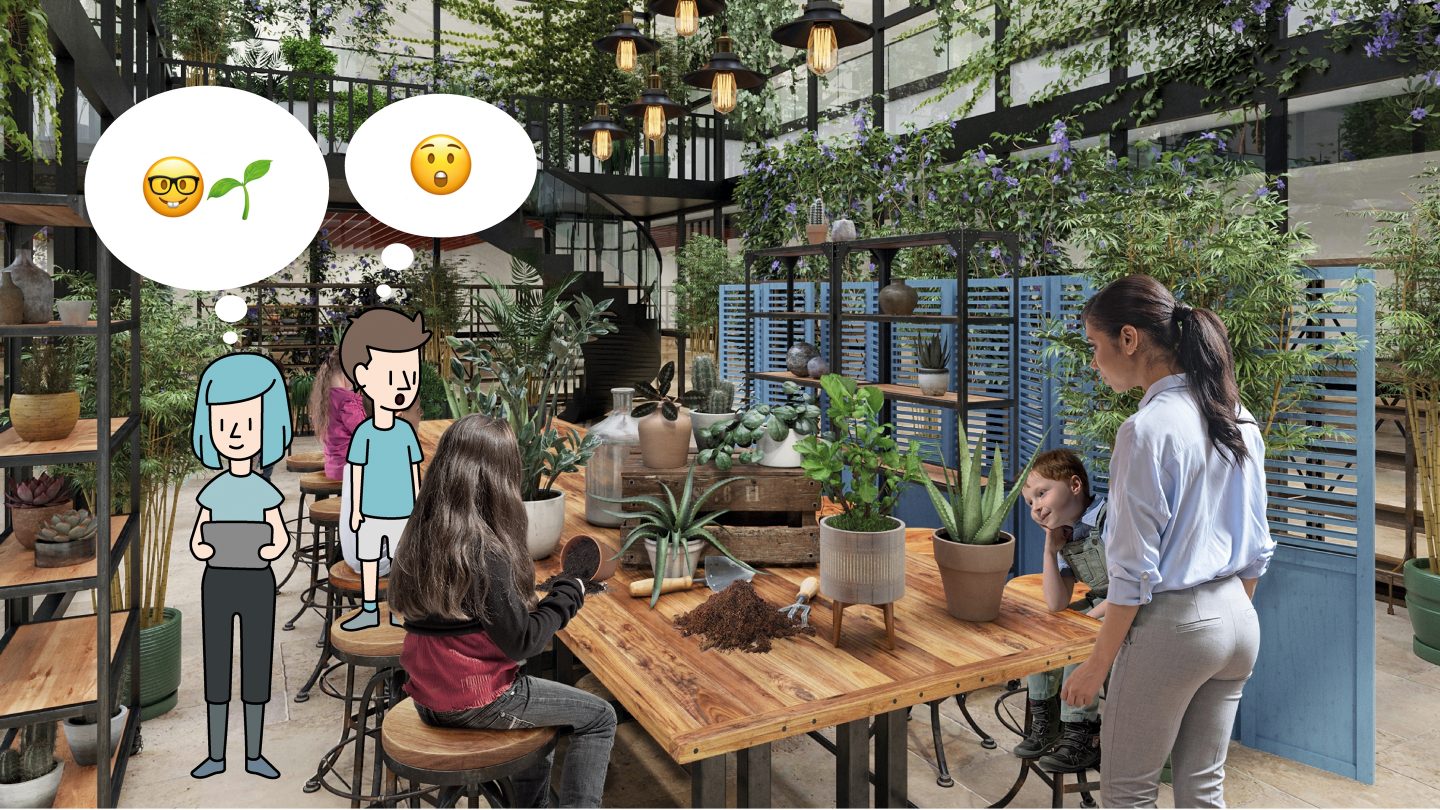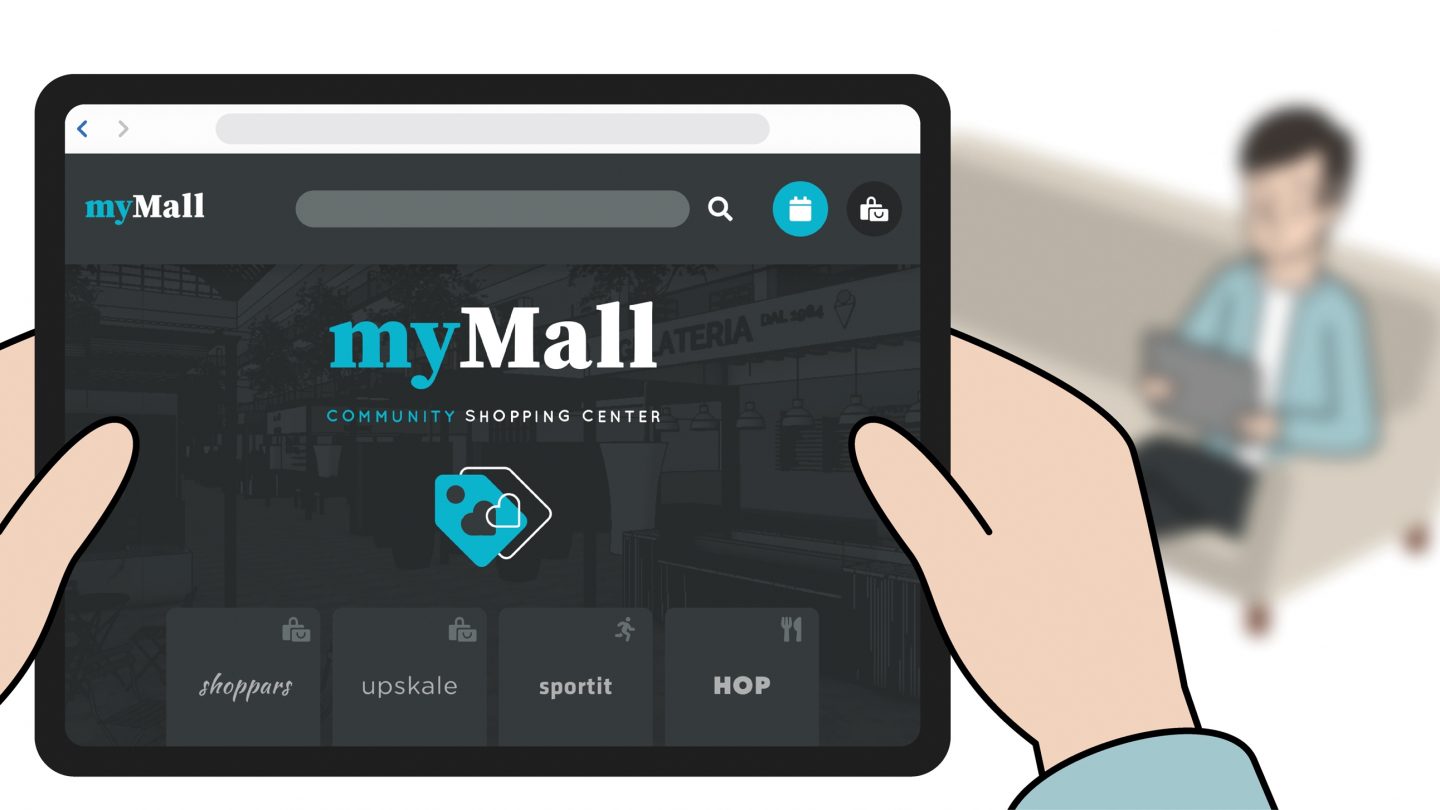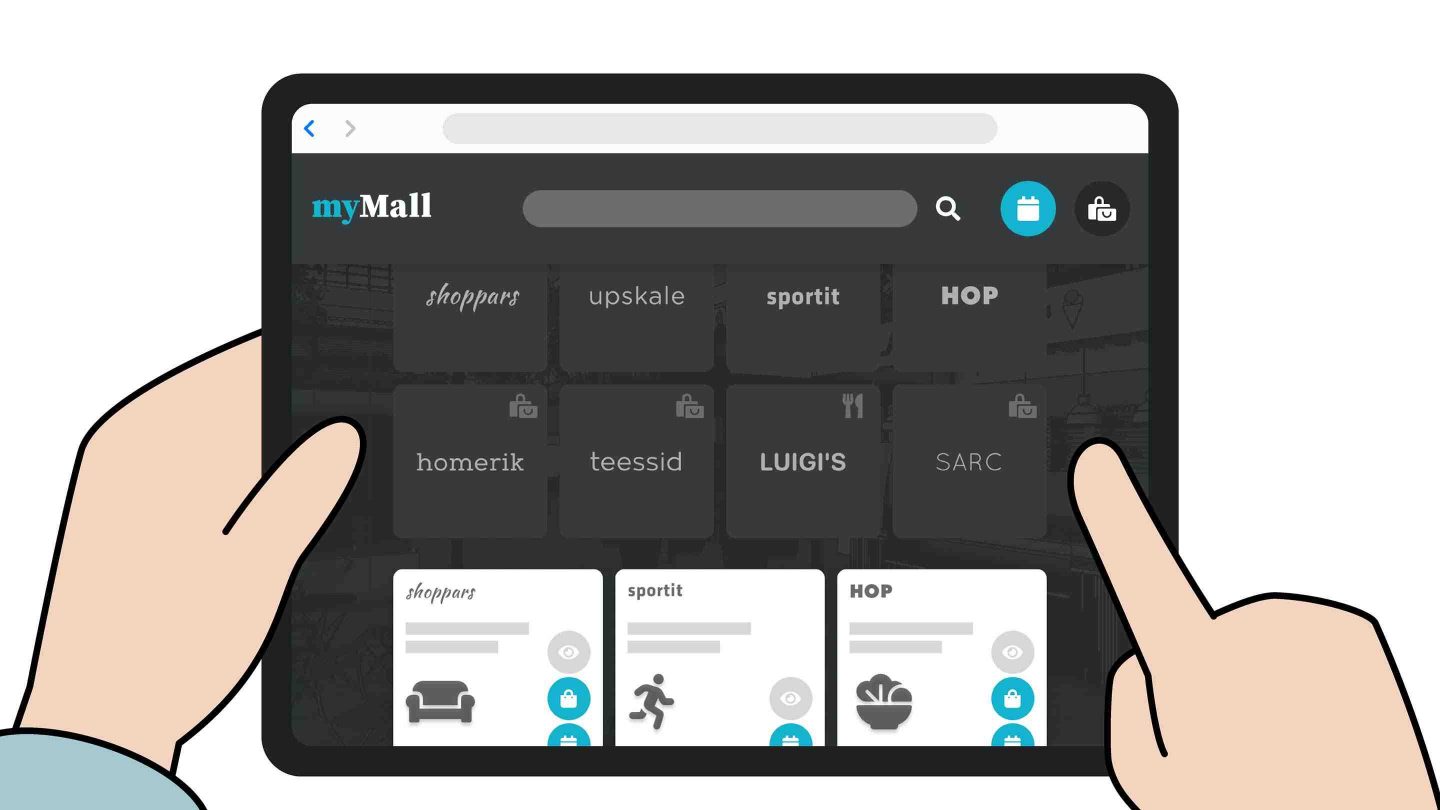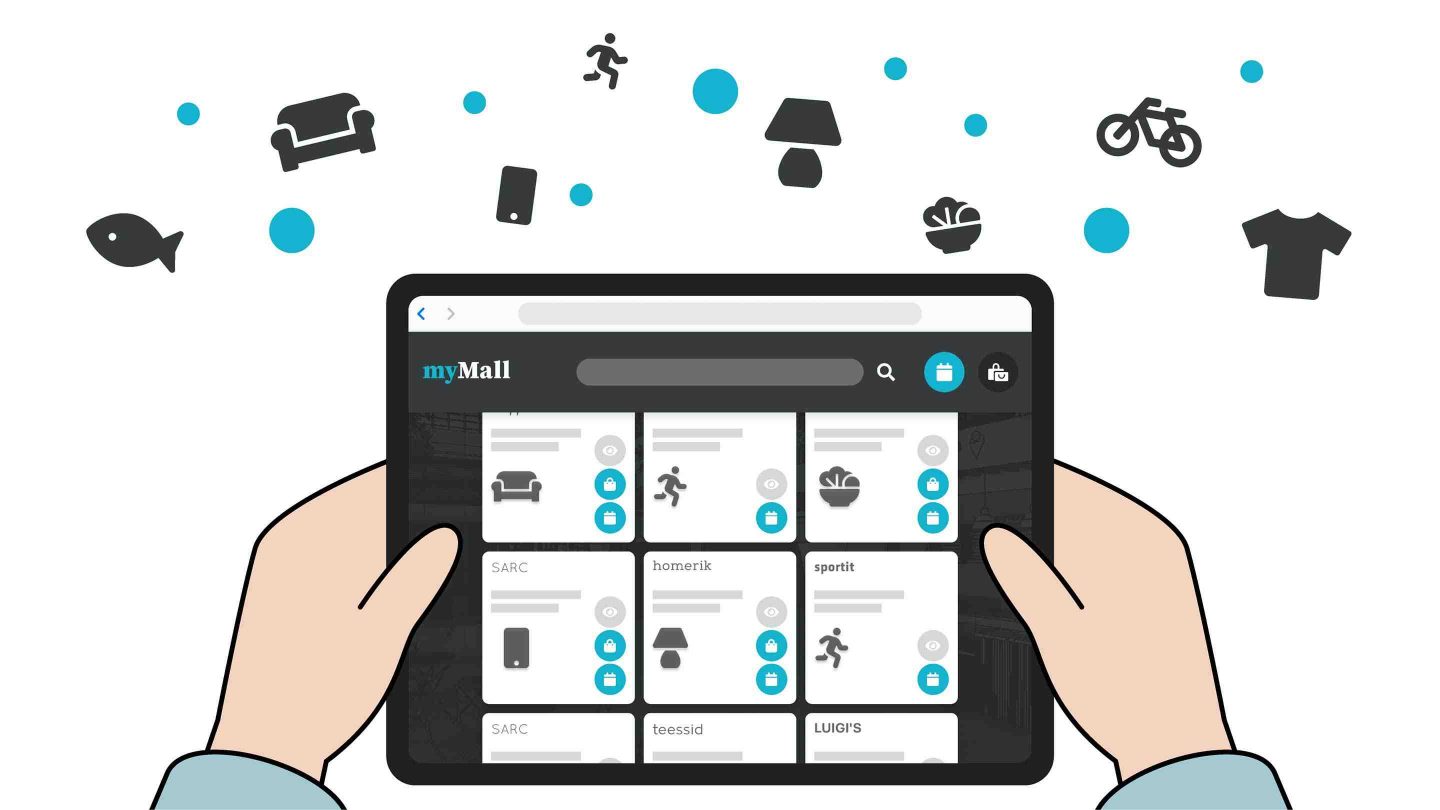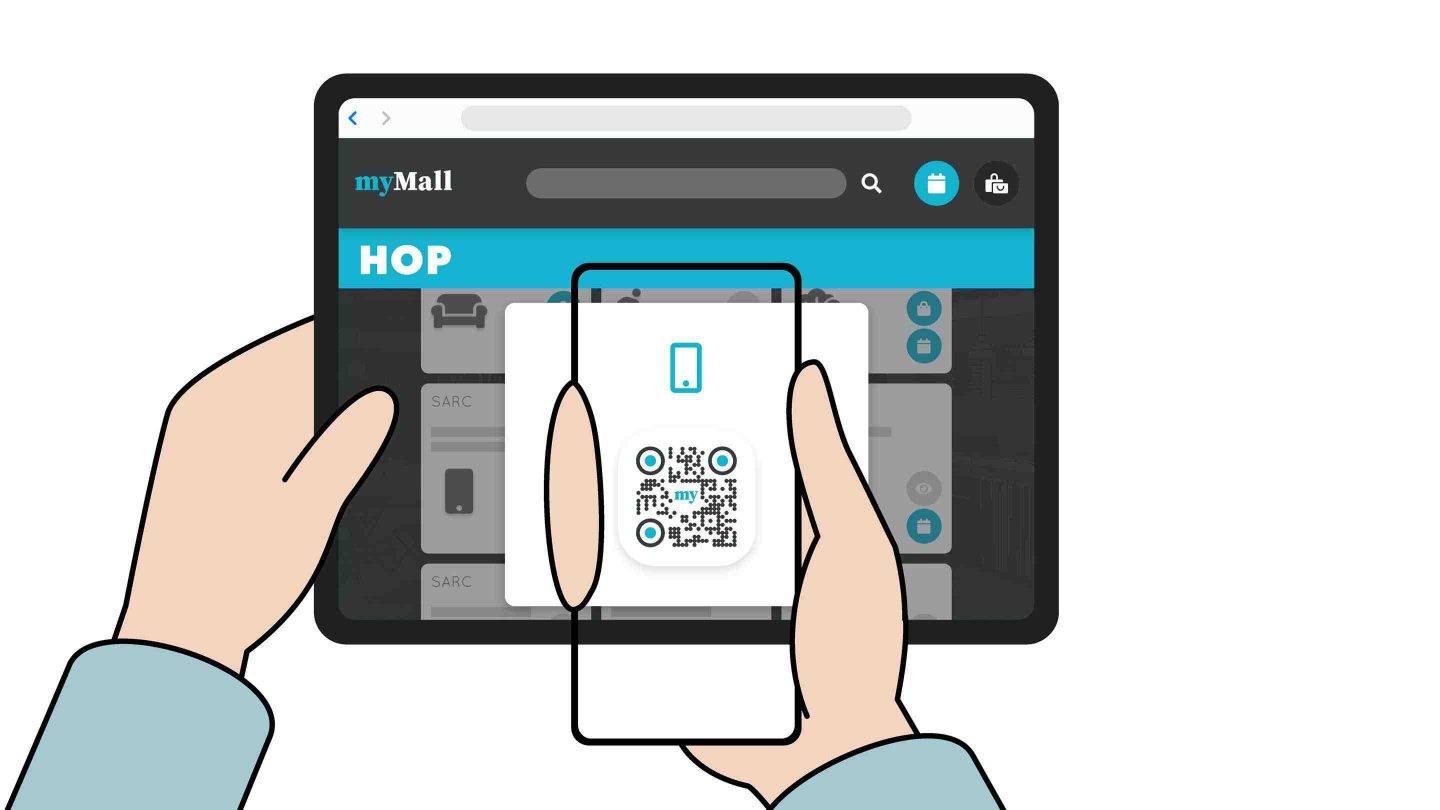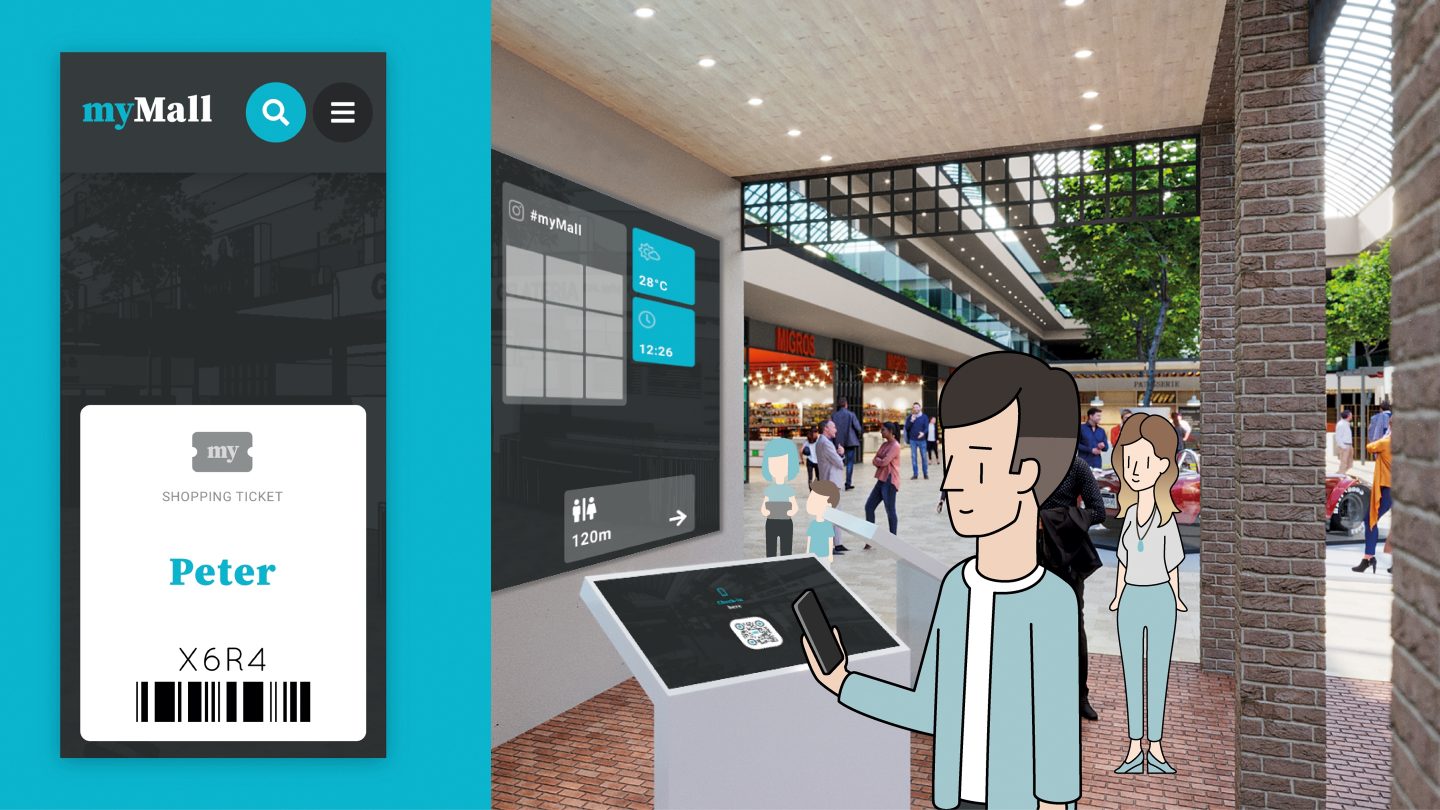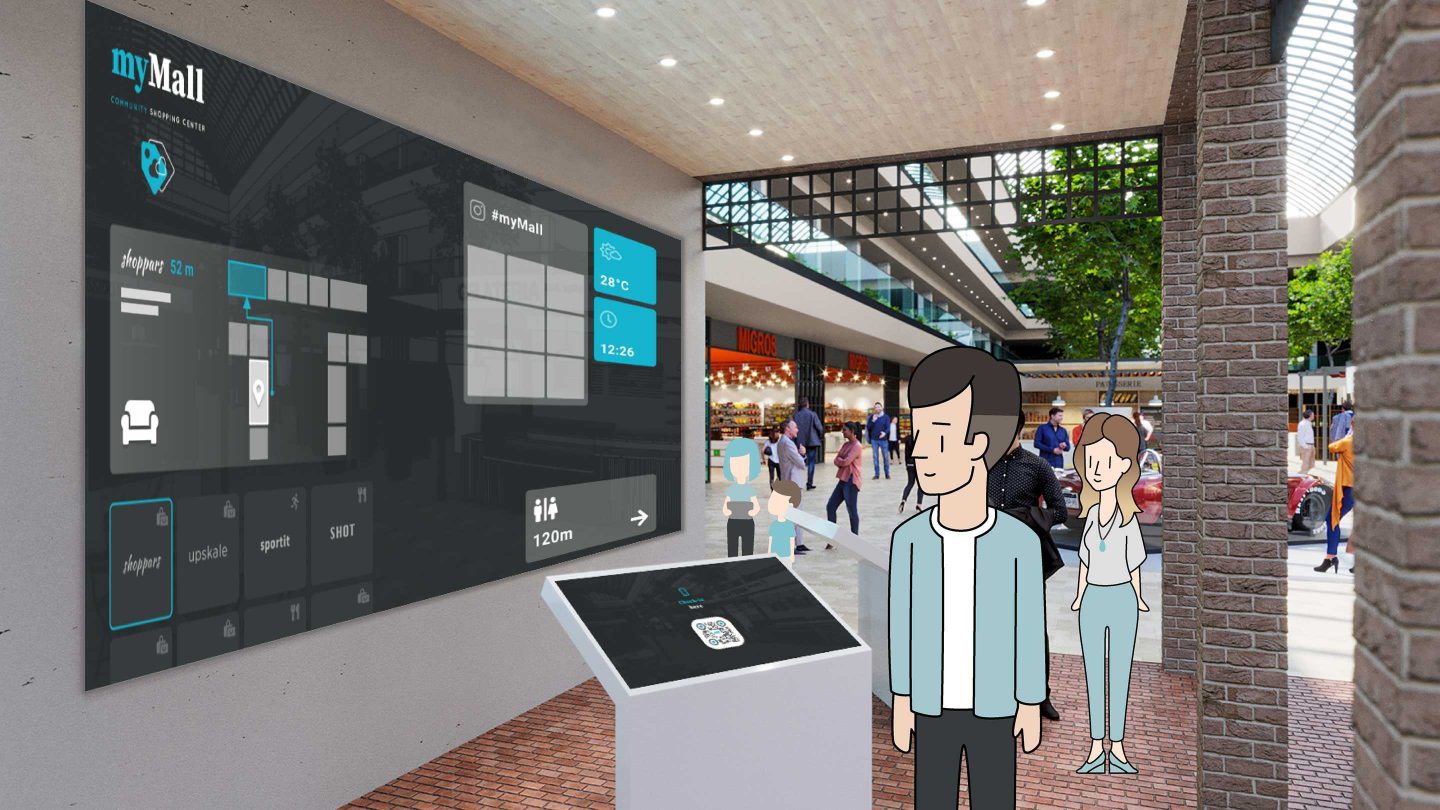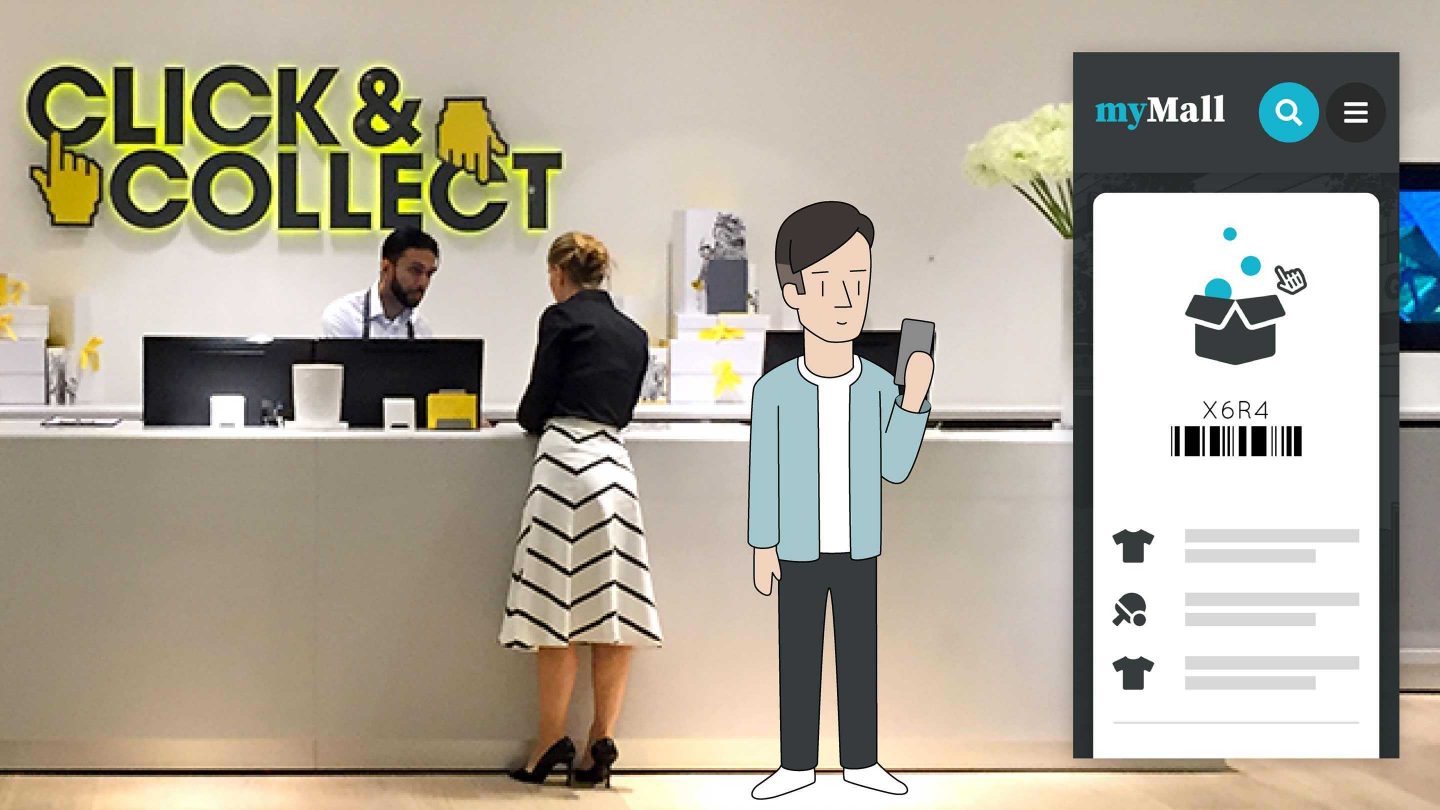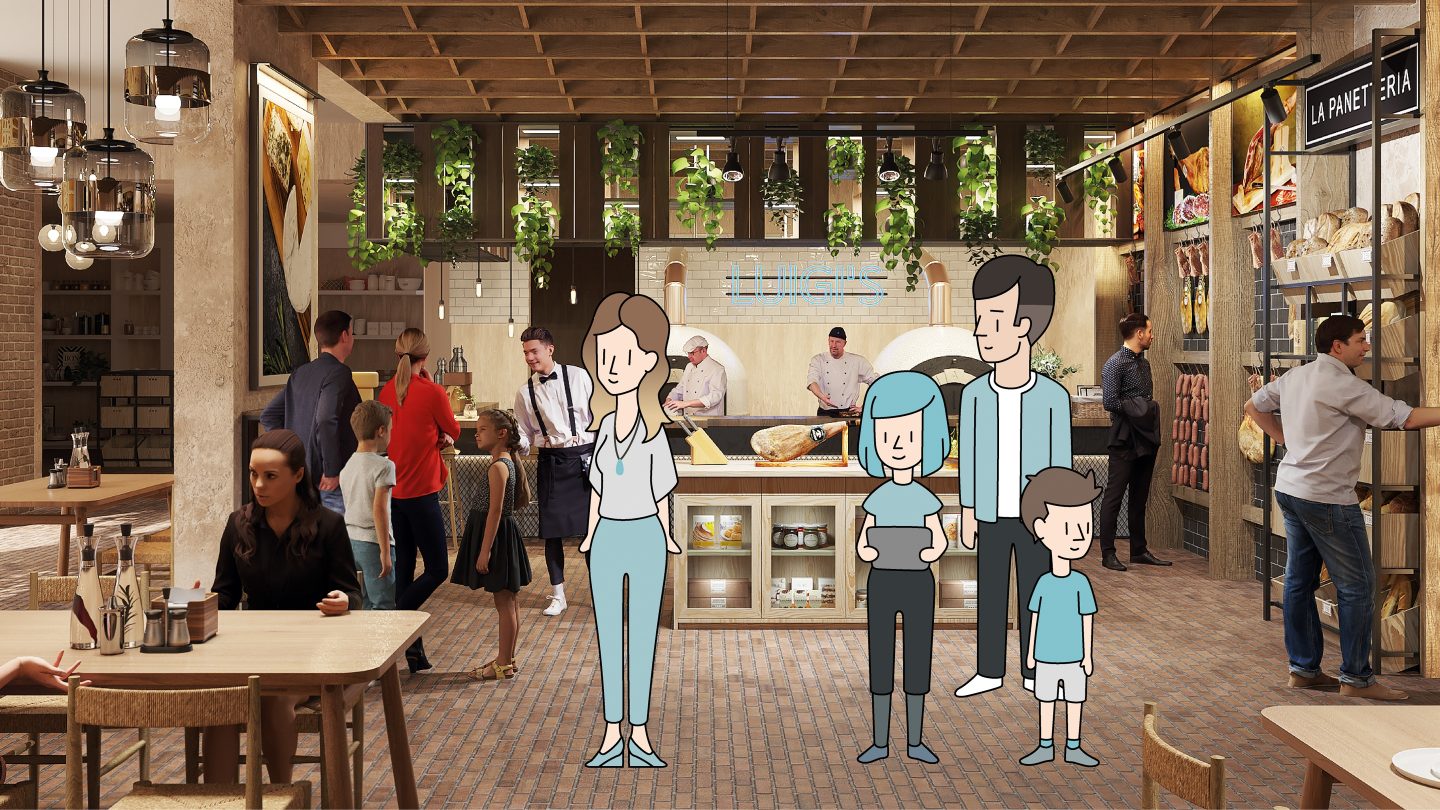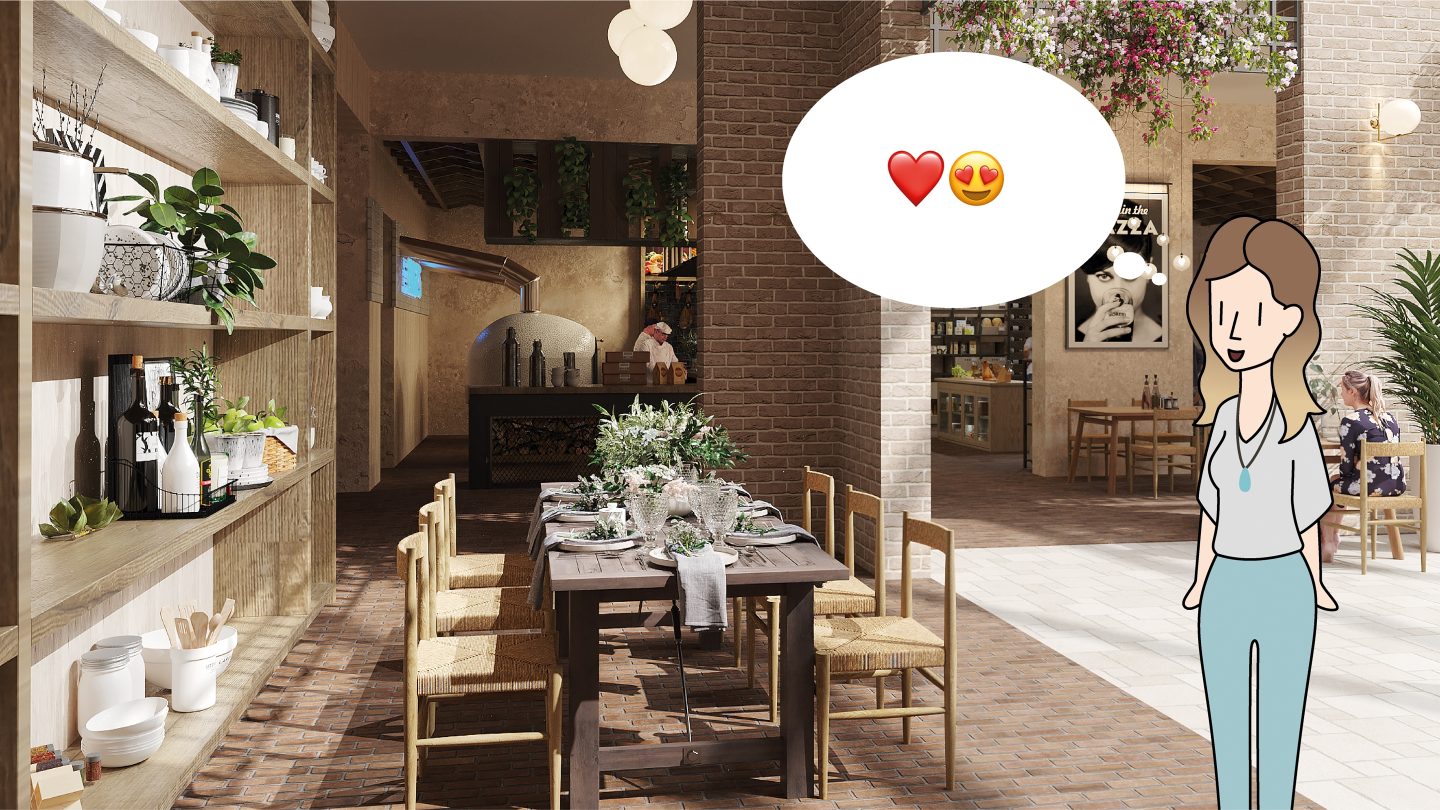The SHOPPING CENTER: A PHYGITAL COMMUNITY SPACE
Shopping centers continue to have great potential – but they must reinvent themselves to realise it. So it's all the more important to get the disciplines involved in the successful creation of a shopping center – urban planning, architectural design, interior, (user) experience design, behavioral research, IT – around the same table and let them shape the future together: by turning the shopping experience into an experience with shopping opportunities.
As in so many areas of life, within a short space of time, the Corona crisis has driven digital transformation and e-commerce growth enormously in the retail segment: More consumers than ever have shopped online in recent months. So it's clear that retail is struggling, whilst online retail is growing strongly. Yet this development also offers a unique opportunity to plan the ideal shopping center of the future – a shopping center that responds to the needs of its clientele and becomes a phygital community space. Milla & Partner takes a look into the near future ...
THE PLACE TO BE: THE SHOPPING CENTER AS BRAND WITH ADDED VALUE
In the future, physical and digital shopping experiences can no longer be viewed separately from one another – ideally, they should be mutually beneficial and combine the best of both worlds: the convenience and clarity that online retail has to offer 24/7 with a unique offline experience tailored to the customer that appeals to all five senses. Accordingly, designing a coherent "customer journey" across all channels will be the key challenge for retailers in the coming years. To remain fit for the future, former shopping temples will have to reinvent themselves: They must move from a purely analog shopping world to an emotional, phygital experience destination – and so become a brand with a fan community.
Tobias Kollmann, Chief Creative Officer, Chief Brand Officer and Partner„The shopping center must become the new place to be – a third place, stationary and online. It must have more to offer than the pure, rational satisfaction of needs. The offer must be exciting, always new and, above all, associated with real added value, a true experience dimension.”
Merchandise and the sales process are therefore "only" the technical by-product of a customer relationship: the focus lies on the people. Their points of contact with the Shopping Center brand must therefore be well thought out to intensify the brand experience at all levels.
SMART SHOPPING: THE CUSTOMER JOURNEY AS A PHYGITAL SHOPPING EXPERIENCE
These days, this already begins when researching on the net at home: Is the shopping center's website user-friendly, clear, informative? Does it offer digital access to the complete range of goods with the option to check the availability of a product in the store? Is a complementary app provided? As a further "touchpoint," the app can be used in the future shopping center not only to manage personalized offers, but also to make (appointment) bookings or reservations, order items via "click and collect" and, above all, make contactless payments via smartphone at the respective points of sale. In the mall itself, good navigation, a coherent appearance, and open and spacious architecture will also be part of the success model. Visitors should feel completely at ease at all times.
In addition to personalized, professional service, the individual stores will not only offer the opportunity to test products in the store, but will leave room for later purchase decisions, which can also be made online – comparable to a showroom. If the decision is made on the spot, the goods will not have to be carried by the customer, but can be collected in a customer-friendly way in the "Care and Store" area, sent home or be delivered to the vehicle when leaving the center (which will have been cleaned and charged in the meantime ...). Once the stores are closed, interactive shop windows will generate interest and present precise and personalized information about the products in the store.
Phygital Shopping thereby not only provides countless conveniences, but also accompanies customers throughout their entire shopping process: from "Pre Shopping" to "After Sales Service". This leads to higher investment in the shopping experience, greater customer satisfaction and loyalty to the brand, as well as transparent insights into customer behavior based on digital services and applications. In the future, this will help to better understand the customer and create a store experience that makes going to the physical store worthwhile and that can be regularly adapted to the ever-changing needs of the customer.
Marc Heikaus, CEO Heikaus Gruppe„Time and again, we see that shopping centers and retailers have no discernible direction and strategy. Today, these are prerequisites for successful brand and retail concepts. Online retail and stationary retail must merge even more.”
HUMAN CENTERED: LIFESTYLE HUB AND COMMUNITY SPACE RATHER THAN A TEMPLE OF CONSUMERISM
The needs of consumers are the linchpin. The key to a successful shopping center will therefore be a change in thinking here: from an investor-driven to a user-centered mall: Depending on the location, it can make sense to attract doctors, to integrate a hotel and to create (further) education opportunities, co-working areas or even living spaces. Farmers' markets with food from the region, restaurants, supper clubs, cafés and bars, fitness studios, wellness and leisure facilities, cinemas, events and various services such as childcare, workshops or seminars complete the program and make the future-proof shopping center not only an experience, but also a physical community space that is digitally connected. In effect, the shopping center becomes a real and inspiring space for encounters, which is shared locally and collectively and which serves for exchange or networking: Here, the need for social interaction can be met.
OPEN, THEMATIC- AND EXPERIENCE-ORIENTED ARCHITECTURE
The architecture is no longer characterized by single-brand cells with the highest possible product density, but offers open spaces and zones designed according to themes and oriented to the quality of the stay and experience. Orientation here is also customer-centric. Instead of just renting out a raw space that tenants have to furnish each time with their own equipment, the center offers modular furnishing concepts that can significantly lower the hurdles. Greater flexibility enables new concepts and promotes profitability and sustainability in equal measure. A new, innovative phase is dawning for the shopping center market. It is not only characterized by good customer service, consistency and convenience, and a high entertainment and experience factor, but also represents a (re)vitalization and almost a return to the original roots of the shopping mall. As such, it more than meets the desires of modern consumers. Ken Hughes, a world leading expert on consumer behavior, futurologist in the retail sector and international speaker, describes them as "blue dot consumers":
Ken Hughes, leading consumer and buyer behavior expert„Understanding the values of the new consumer safeguards us against fading in relevance. Reflecting these values back at the modern consumer ensures our success. The Blue Dot Consumer is all about placing the customer at the heart of the business, of the customer journey and of the brand experience. [...] Authenticity: The New Consumer only seems to be interested in brands that are ‘real’. We need to go above and beyond what they expect to truly delight them. We need to focus on the human connection, to touch their heart and connect with them in a real way.”



